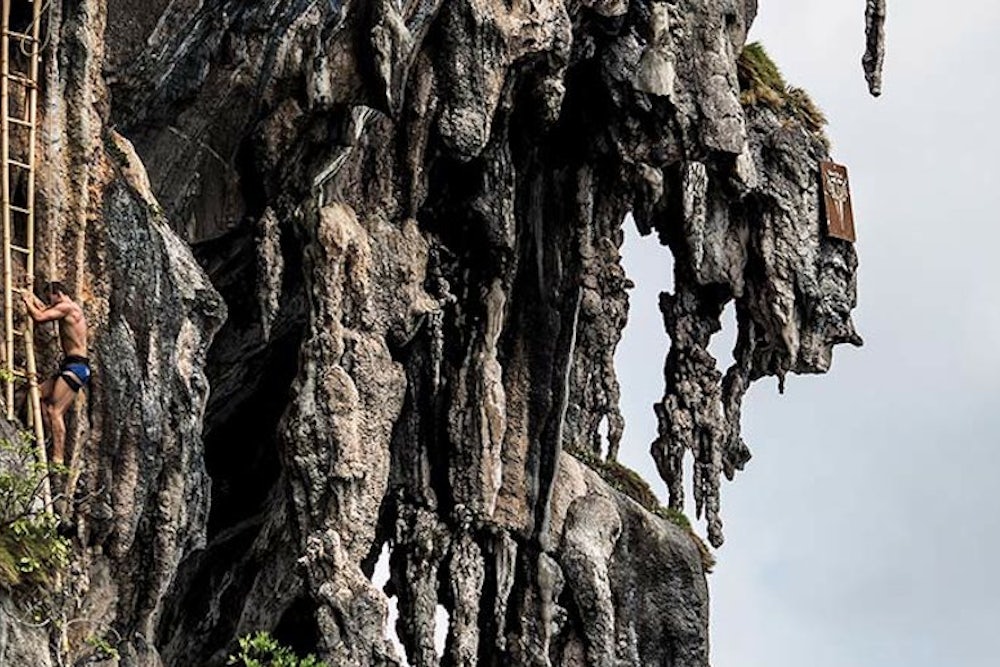Excellent film though it is, Gravity is a thoroughly inappropriate title for a movie set in space, in zero-G. It’s only in the last few minutes of the picture that the titular force makes the briefest of cameo appearances. This picture, on the other hand, is all about gravity.
LOCATION: Phi Phi Islands, Thailand DATE: October 24, 2013 PHOTOGRAPHER: Dean Treml
It was taken during the Red Bull Cliff Diving World Series in Thailand, but I would ask you, for the moment, to ignore the thing—the diver—that makes it heart-stoppingly beautiful. Look, instead, at the rocks. I’ve forgotten almost everything I learned in school about geomorphology so am unsure of the processes that formed these implausibly CGI-looking cliffs. But gravity must have done its bit. The other diver making his way precariously up ladders clinging tightly to the cliffs—so tightly as to make us more than a little admiring of the unseen people who fixed them there in the first place—is at odds with the overwhelming direction of the picture which is, in a word, down. Heraclitus’s claim that the way up and the way down are one and the same has always seemed a bit daft—and now we have the photographic evidence to prove it. The reason it looks so dangerous, so easy to fall from these rocks, is because they appear to have taken several million years to resist the urge themselves. Wind and erosion may have played a part but these cliffs look like they began as molten lava, which, once poured, then dripped into the sea, before solidifying like wax on the side of a candle.
Next, take a look at the sky. Apparently the dive platform was at 25 meters, but the photograph suggests that we are actually above the clouds, privileged witnesses to a kind of free-form skydiving. Now, finally, consider the diver who the photographer suspends in the midst of his sequence of moves. Rotate the picture 90 degrees to the left and he looks like he’s plunging headfirst into the rocks or into a pool of deep water hidden in their midst. Rotate it a further 90 degrees to the left and he looks like he’s flying, super-heroically, into or past a wall of cliffs. As it is, he’s practically lying on the sky, transforming the vertiginous into the almost-horizontal. At the risk of stating the obvious, without this tiny figure, the picture would be wholly uninteresting—unlike Bruegel’s Landscape with the Fall of Icarus in which there’s so much going on that people barely notice (in Auden’s famous words) “a boy falling out of the sky” and “the white legs disappearing into the green/Water.” There is a world of difference between falling (which is what happened to Icarus) and diving. In the former, one is the helpless victim of gravity; in the latter, gravity is a lethal instrument one plays.
